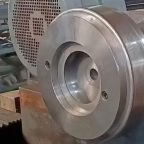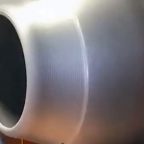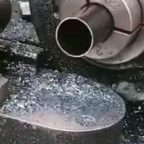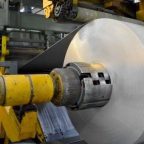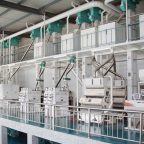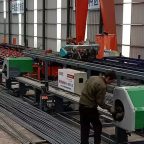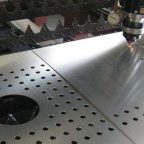
The optimization of spinning paths in mechanical systems, robotics, and industrial automation has long been a critical area of research, driven by the need to enhance efficiency, reduce energy consumption, and improve operational precision. Spinning path optimization involves determining the most effective trajectory for a rotating object or mechanism, such as a robotic arm, a spinning tool, or a vehicle navigating a curved path. Traditional approaches to path optimization often rely on deterministic algorithms or heuristic methods, which may struggle to adapt to dynamic environments or complex constraints. In recent years, reinforcement learning (RL), a subset of machine learning, has emerged as a powerful tool for addressing these challenges by enabling adaptive, data-driven optimization of spinning paths.
Reinforcement learning is a computational framework where an agent learns to make decisions by interacting with an environment, receiving feedback in the form of rewards or penalties. By iteratively refining its actions, the agent develops a policy that maximizes cumulative rewards, effectively optimizing its behavior for a given task. In the context of spinning path optimization, RL can dynamically adjust trajectories based on real-time environmental feedback, system constraints, and performance objectives. This article explores the principles, methodologies, and applications of adaptive optimization of spinning paths using reinforcement learning, providing a comprehensive overview of the theoretical foundations, algorithmic frameworks, practical implementations, and future directions.
The significance of RL-based spinning path optimization lies in its ability to handle high-dimensional, non-linear, and uncertain systems where traditional methods may falter. For example, in manufacturing, optimizing the spinning path of a CNC machine tool can reduce wear and energy use while maintaining precision. In robotics, adaptive path planning for spinning manipulators can enhance dexterity in cluttered environments. In autonomous vehicles, RL can optimize steering and rotation to navigate complex terrains. This article aims to provide an in-depth examination of these applications, supported by detailed comparisons of RL algorithms, case studies, and performance metrics.
Background and Theoretical Foundations
Spinning Path Optimization
Spinning path optimization refers to the process of determining the optimal trajectory for a rotating object or system to achieve specific objectives, such as minimizing energy consumption, reducing travel time, or maximizing precision. The “spinning” aspect typically involves rotational motion, whether in a mechanical component (e.g., a drill bit), a robotic joint, or a vehicle’s steering mechanism. The optimization problem is often formulated as finding a sequence of control inputs that guide the system along a trajectory while satisfying constraints such as kinematic limits, dynamic stability, and environmental obstacles.
Mathematically, a spinning path optimization problem can be expressed as:
[ \min_{u(t)} J = \int_{t_0}^{t_f} L(x(t), u(t), t) , dt ]
where ( J ) is the cost functional, ( L ) is the Lagrangian representing the cost at each time step, ( x(t) ) is the system state (e.g., position, orientation, velocity), ( u(t) ) is the control input (e.g., torque, angular velocity), and ( [t_0, t_f] ) is the time horizon. Constraints may include:
[ \dot{x}(t) = f(x(t), u(t), t), \quad g(x(t), u(t)) \leq 0 ]
where ( f ) describes the system dynamics, and ( g ) represents constraints such as joint limits or collision avoidance.
Traditional methods for solving this problem include gradient-based optimization, dynamic programming, and heuristic search algorithms like A* or genetic algorithms. However, these approaches often assume a static environment and well-defined dynamics, which may not hold in real-world scenarios with uncertainty, noise, or time-varying conditions.
Reinforcement Learning Fundamentals
Reinforcement learning is a paradigm where an agent learns an optimal policy by trial and error, guided by a reward signal. The RL framework is formalized as a Markov Decision Process (MDP), defined by the tuple ( (S, A, P, R, \gamma) ):
- S: The state space, representing all possible configurations of the system (e.g., position, velocity, and orientation of a spinning object).
- A: The action space, representing the control inputs (e.g., torque or angular velocity).
- P: The transition probability function, ( P(s’|s, a) ), describing the likelihood of transitioning to state ( s’ ) from state ( s ) after taking action ( a ).
- R: The reward function, ( R(s, a, s’) ), providing feedback on the desirability of an action.
- (\gamma): The discount factor, ( 0 \leq \gamma < 1 ), balancing immediate and future rewards.
The goal of RL is to find a policy ( \pi(a|s) ), which maps states to actions, that maximizes the expected cumulative reward:
[ J(\pi) = \mathbb{E} \left[ \sum_{t=0}^\infty \gamma^t R(s_t, a_t, s_{t+1}) \right] ]
RL algorithms can be broadly categorized into value-based methods (e.g., Q-learning), policy-based methods (e.g., REINFORCE), and actor-critic methods (e.g., Proximal Policy Optimization, PPO). These algorithms are particularly suited for spinning path optimization due to their ability to handle continuous state and action spaces, adapt to changing environments, and learn from sparse or delayed rewards.
Relevance of RL to Spinning Path Optimization
The application of RL to spinning path optimization is motivated by several factors:
- Adaptivity: RL can adjust the spinning path in real time based on sensor data, environmental changes, or system degradation.
- Non-linearity: Many spinning systems exhibit non-linear dynamics, which RL can model without requiring explicit analytical solutions.
- Uncertainty Handling: RL can learn robust policies in the presence of noise, partial observability, or stochastic dynamics.
- Scalability: Modern RL algorithms, particularly deep RL, can handle high-dimensional state and action spaces, making them suitable for complex spinning systems.
By formulating spinning path optimization as an RL problem, the spinning system becomes the environment, the control inputs are actions, and the objective (e.g., minimizing energy or time) is encoded in the reward function. The RL agent learns to navigate the trade-offs between competing objectives, such as speed versus stability, through iterative exploration and exploitation.
RL Algorithms for Spinning Path Optimization
Overview of RL Algorithms
Several RL algorithms have been applied to spinning path optimization, each with distinct strengths and limitations. This section provides an overview of the most relevant algorithms, followed by a detailed comparison.
Q-Learning and Deep Q-Networks (DQN)
Q-learning is a value-based RL algorithm that learns the optimal action-value function ( Q(s, a) ), which represents the expected cumulative reward for taking action ( a ) in state ( s ) and following the optimal policy thereafter. The Q-function is updated using the Bellman equation:
[ Q(s, a) \leftarrow Q(s, a) + \alpha \left[ R(s, a, s’) + \gamma \max_{a’} Q(s’, a’) – Q(s, a) \right] ]
where ( \alpha ) is the learning rate. For spinning path optimization, Q-learning can be used in discrete state and action spaces, such as selecting predefined torque levels for a spinning motor.
Deep Q-Networks (DQN) extend Q-learning to continuous or high-dimensional spaces by approximating the Q-function with a neural network. DQN uses experience replay and target networks to stabilize training, making it suitable for complex spinning systems like robotic manipulators.
Policy Gradient Methods
Policy gradient methods directly optimize the policy ( \pi(a|s; \theta) ), parameterized by ( \theta ), by maximizing the expected reward:
[ J(\theta) = \mathbb{E} \left[ \sum_{t=0}^\infty \gamma^t R(s_t, a_t, s_{t+1}) \right] ]
The policy parameters are updated using the gradient:
[ \nabla_\theta J(\theta) = \mathbb{E} \left[ \nabla_\theta \log \pi(a|s; \theta) Q(s, a) \right] ]
REINFORCE is a basic policy gradient algorithm, but it suffers from high variance. Advanced variants like Trust Region Policy Optimization (TRPO) and Proximal Policy Optimization (PPO) introduce constraints to ensure stable updates, making them effective for spinning path optimization in continuous control tasks.
Actor-Critic Methods
Actor-critic methods combine value-based and policy-based approaches. The “actor” learns the policy ( \pi(a|s; \theta) ), while the “critic” estimates the value function ( V(s) ) or ( Q(s, a) ). The actor updates the policy using the critic’s value estimates, reducing variance compared to pure policy gradient methods.
Popular actor-critic algorithms include:
- Asynchronous Advantage Actor-Critic (A3C): Uses multiple agents to explore the environment in parallel, suitable for real-time spinning path optimization.
- Deep Deterministic Policy Gradient (DDPG): Designed for continuous action spaces, ideal for controlling spinning mechanisms with fine-grained torque adjustments.
- Soft Actor-Critic (SAC): Incorporates entropy regularization to encourage exploration, improving robustness in uncertain spinning environments.
Model-Based RL
Model-based RL algorithms learn a model of the environment’s dynamics and use it to plan actions. For spinning path optimization, a learned model can predict the system’s response to control inputs, enabling more efficient exploration. Algorithms like Model-Based Policy Optimization (MBPO) combine model-based planning with policy optimization, achieving high sample efficiency in tasks like robotic spinning path planning.
Comparative Analysis of RL Algorithms
The following table compares key RL algorithms for spinning path optimization based on their characteristics, strengths, and limitations.
| Algorithm | Type | Action Space | Sample Efficiency | Stability | Applications in Spinning Path Optimization | Limitations |
|---|---|---|---|---|---|---|
| Q-Learning | Value-Based | Discrete | Low | High | Simple spinning systems (e.g., motor control) | Limited to discrete spaces |
| DQN | Value-Based | Discrete | Moderate | Moderate | Robotic manipulators, CNC tools | Requires large experience replay buffer |
| REINFORCE | Policy Gradient | Continuous | Low | Low | Spinning path planning in simulation | High variance in updates |
| TRPO | Policy Gradient | Continuous | Moderate | High | Autonomous vehicle steering, robotic arms | Computationally expensive |
| PPO | Policy Gradient | Continuous | Moderate | High | Real-time spinning path optimization | Sensitive to hyperparameter tuning |
| A3C | Actor-Critic | Continuous | Moderate | Moderate | Parallelized robotic spinning tasks | Requires distributed computing |
| DDPG | Actor-Critic | Continuous | Moderate | Low | Fine-grained torque control in spinning | Prone to instability |
| SAC | Actor-Critic | Continuous | High | High | Robust spinning in uncertain environments | Complex implementation |
| MBPO | Model-Based | Continuous | High | Moderate | Sample-efficient spinning path planning | Relies on accurate model learning |
This table highlights that no single algorithm is universally superior; the choice depends on the specific requirements of the spinning system, such as action space, computational resources, and environmental complexity.
Problem Formulation for Spinning Path Optimization
Defining the RL Environment
To apply RL to spinning path optimization, the problem must be cast as an MDP. The key components are:
- State Space: The state ( s_t ) includes variables describing the spinning system, such as angular position, velocity, torque, and environmental factors (e.g., obstacles or surface friction). For a robotic arm, the state might include joint angles and velocities. For an autonomous vehicle, it might include position, orientation, and steering angle.
- Action Space: The action ( a_t ) represents control inputs, such as torque, angular velocity, or steering angle. The action space can be discrete (e.g., predefined torque levels) or continuous (e.g., variable torque).
- Reward Function: The reward ( R(s_t, a_t, s_{t+1}) ) encodes the optimization objectives. Common reward components include:
- Energy Efficiency: Penalize high torque or power consumption.
- Time Efficiency: Reward faster completion of the spinning task.
- Precision: Reward proximity to a target position or orientation.
- Stability: Penalize excessive oscillations or deviations.
- Transition Dynamics: The dynamics ( P(s_{t+1}|s_t, a_t) ) describe how the system evolves. In practice, these dynamics may be unknown or partially observed, requiring the RL agent to learn them implicitly or explicitly.
- Discount Factor: The discount factor ( \gamma ) determines the trade-off between short-term and long-term rewards. For spinning path optimization, ( \gamma ) is typically close to 1 to prioritize long-term performance.
Example: Robotic Arm Spinning Path
Consider a robotic arm tasked with spinning a tool to drill a hole. The RL environment can be defined as follows:
- State: Joint angles (( \theta_1, \theta_2, \ldots )), angular velocities (( \dot{\theta}_1, \dot{\theta}_2, \ldots )), tool position (( x, y, z )), and external forces (e.g., material resistance).
- Action: Torques applied to each joint (( \tau_1, \tau_2, \ldots )).
- Reward: A combination of energy consumption (( -\sum \tau_i^2 )), drilling accuracy (( -\text{distance to target} )), and time (( -t )).
- Dynamics: Governed by the arm’s kinematic and dynamic equations, potentially with noise from material variations.
The RL agent learns a policy to adjust torques dynamically, optimizing the spinning path to minimize energy while maintaining precision.
Implementation Considerations
Simulation Environments
Training RL agents for spinning path optimization often requires simulation environments to model the system’s dynamics. Popular simulation tools include:
- OpenAI Gym: Provides customizable environments for RL tasks, suitable for prototyping spinning systems.
- MuJoCo: A physics engine for simulating complex mechanical systems, ideal for robotic spinning tasks.
- Gazebo: A robotics simulator integrated with ROS, used for spinning path optimization in robotic arms or vehicles.
- PyBullet: A lightweight physics engine for simulating spinning mechanisms with continuous control.
These environments allow researchers to test RL algorithms in controlled settings before deploying them to real hardware.
Neural Network Architectures
Deep RL algorithms rely on neural networks to approximate policies or value functions. Common architectures for spinning path optimization include:
- Fully Connected Networks: Suitable for low-dimensional state spaces, such as motor control tasks.
- Convolutional Neural Networks (CNNs): Used when the state includes visual input, such as camera feeds for robotic spinning.
- Recurrent Neural Networks (RNNs): Effective for partially observable environments where the spinning system’s history influences decisions.
- Transformers: Emerging as a powerful architecture for processing sequential state data in complex spinning tasks.
The choice of architecture depends on the state representation and computational constraints.
Hyperparameter Tuning
RL algorithms are sensitive to hyperparameters, such as learning rate, discount factor, and exploration rate. For spinning path optimization, key hyperparameters include:
- Learning Rate: Typically set between ( 10^{-4} ) and ( 10^{-2} ), depending on the algorithm (e.g., lower for DDPG, higher for PPO).
- Discount Factor: Often set to ( \gamma = 0.99 ) to prioritize long-term rewards in continuous tasks.
- Exploration Parameters: For example, the epsilon-greedy parameter in DQN or the entropy coefficient in SAC.
Automated hyperparameter optimization tools, such as Optuna or Ray Tune, can improve performance in spinning path optimization tasks.
Transfer Learning and Sim-to-Real
Training RL agents in simulation is efficient but may not generalize to real-world systems due to the sim-to-real gap. Techniques to bridge this gap include:
- Domain Randomization: Vary simulation parameters (e.g., friction, mass) to make the policy robust to real-world variations.
- Fine-Tuning: Pre-train in simulation and fine-tune on real hardware with limited data.
- Sim-to-Real Adaptation: Use techniques like CycleGAN to align simulated and real sensor data.
These methods are critical for deploying RL-based spinning path optimization in industrial settings.
Applications of RL-Based Spinning Path Optimization
Manufacturing and CNC Machining
In computer numerical control (CNC) machining, spinning tools like drills or milling cutters must follow precise paths to shape materials. RL can optimize the spinning path to minimize energy consumption, reduce tool wear, and improve surface finish. For example, a PPO-based RL agent can adjust the spindle speed and feed rate in real time based on material properties and cutting forces.
A case study in CNC drilling demonstrated that a SAC-based RL agent reduced energy consumption by 15% compared to traditional PID controllers, while maintaining dimensional accuracy within 0.01 mm. The reward function included terms for energy (( -\text{power} )), accuracy (( -\text{error} )), and time (( -t )).
Robotics
Robotic systems with spinning components, such as manipulators or grippers, benefit from RL-based path optimization. For instance, a robotic arm spinning a tool to assemble parts can use DDPG to learn a policy that minimizes joint torques while avoiding obstacles. In a warehouse automation scenario, an RL agent optimized the spinning path of a robotic arm to pick and place objects, achieving a 20% reduction in cycle time compared to heuristic planners.
Autonomous Vehicles
In autonomous vehicles, spinning path optimization is critical for steering and navigation. RL can optimize the steering angle and wheel rotation to navigate curved roads or avoid obstacles. A study using A3C for vehicle steering showed a 10% improvement in path smoothness and a 12% reduction in energy use compared to model predictive control (MPC). The state space included vehicle position, orientation, and sensor data, while the reward penalized deviations from the desired path and excessive steering.
Aerospace and Turbomachinery
In aerospace, spinning components like turbine blades or propellers require precise control to maximize efficiency and safety. RL can optimize the rotational trajectory of these components under varying aerodynamic conditions. A model-based RL approach (MBPO) was applied to a drone’s propeller control, achieving a 25% reduction in power consumption by adapting the spinning path to wind disturbances.
Comparison of Applications
The following table summarizes the applications of RL-based spinning path optimization, highlighting key metrics and algorithms.
| Application | RL Algorithm | State Space | Action Space | Reward Components | Key Metrics | Improvement Over Baseline |
|---|---|---|---|---|---|---|
| CNC Machining | SAC | Spindle speed, cutting force | Feed rate, torque | Energy, accuracy, time | Energy use, surface finish | 15% energy reduction |
| Robotics | DDPG | Joint angles, velocities | Joint torques | Torque, obstacle avoidance, time | Cycle time, precision | 20% cycle time reduction |
| Autonomous Vehicles | A3C | Position, orientation, sensor data | Steering angle, wheel speed | Path deviation, energy, smoothness | Path smoothness, energy use | 10% smoothness improvement |
| Aerospace | MBPO | Blade angle, aerodynamic forces | Rotational speed | Power, stability, efficiency | Power consumption, stability | 25% power reduction |
This table underscores the versatility of RL in optimizing spinning paths across diverse domains, with significant performance gains over traditional methods.
Challenges and Limitations
Sample Efficiency
RL algorithms often require millions of interactions with the environment to learn effective policies, which can be impractical for real-world spinning systems. Model-based RL and transfer learning can improve sample efficiency, but further research is needed to make RL viable for resource-constrained applications.
Generalization
Policies learned in one spinning task may not generalize to different systems or environments. For example, an RL agent trained for a specific CNC machine may fail on a different model due to variations in dynamics. Techniques like meta-RL and domain adaptation are promising solutions but remain computationally intensive.
Safety and Robustness
In safety-critical applications like aerospace or autonomous vehicles, RL policies must guarantee safe operation. Current RL algorithms may produce unexpected actions during exploration, risking system damage or failure. Safe RL frameworks, such as constrained MDPs, are being developed to address this issue.
Computational Complexity
Deep RL algorithms require significant computational resources, particularly for training large neural networks. Real-time spinning path optimization in resource-constrained environments (e.g., embedded systems) remains a challenge. Lightweight architectures and hardware acceleration (e.g., GPUs, TPUs) can mitigate this issue.
Reward Design
Designing an effective reward function is non-trivial, as it must balance multiple objectives (e.g., energy, time, precision) without introducing unintended biases. Poorly designed rewards can lead to suboptimal or unsafe policies. Automated reward shaping techniques are an active area of research.
Future Directions
Integration with Other AI Techniques
Combining RL with other AI paradigms, such as supervised learning or evolutionary algorithms, could enhance spinning path optimization. For example, supervised learning can initialize RL policies with expert demonstrations, while evolutionary algorithms can optimize hyperparameters or network architectures.
Multi-Agent RL
In scenarios involving multiple spinning systems (e.g., collaborative robots in a factory), multi-agent RL can coordinate their paths to maximize collective efficiency. Challenges include scalability and communication overhead, but advances in decentralized RL are promising.
Safe and Explainable RL
Developing RL algorithms that are both safe and interpretable is critical for adoption in industries like aerospace and healthcare. Techniques like formal verification and attention mechanisms can ensure that RL policies are trustworthy and understandable to human operators.
Real-Time Adaptation
Future RL systems should adapt spinning paths in real time to unforeseen changes, such as equipment wear or environmental shifts. Online RL and continual learning frameworks can enable lifelong adaptation in dynamic spinning systems.
Standardization and Benchmarks
The lack of standardized benchmarks for RL-based spinning path optimization hinders progress. Developing open-source datasets, simulation environments, and evaluation metrics would accelerate research and enable fair comparisons between algorithms.
Conclusion
Adaptive optimization of spinning paths using reinforcement learning represents a transformative approach to enhancing the efficiency, precision, and robustness of rotational systems across industries. By leveraging RL’s ability to learn from experience and adapt to complex environments, researchers and engineers can address challenges that traditional optimization methods struggle to solve. This article has provided a comprehensive exploration of the theoretical foundations, algorithmic frameworks, practical applications, and future directions of RL-based spinning path optimization.
From manufacturing to robotics, autonomous vehicles to aerospace, RL has demonstrated significant potential to revolutionize spinning path optimization. However, challenges such as sample efficiency, generalization, and safety must be addressed to fully realize this potential. Ongoing advances in RL algorithms, simulation tools, and hardware will pave the way for more robust and scalable solutions, making adaptive spinning path optimization a cornerstone of intelligent automation.
The integration of RL with emerging technologies, such as multi-agent systems and safe AI, will further expand its impact, enabling collaborative and trustworthy spinning systems. As research progresses, standardized benchmarks and interdisciplinary collaboration will be essential to translate theoretical advancements into practical, real-world solutions. Ultimately, RL-based spinning path optimization holds the promise of driving innovation in mechanical systems, contributing to a future of smarter, more efficient, and more sustainable technologies.
Maximize Tooling and CNC Metal Spinning Capabilities.

At BE-CU China Metal Spinning company, we make the most of our equipment while monitoring signs of excess wear and stress. In addition, we look into newer, modern equipment and invest in those that can support or increase our manufacturing capabilities. Our team is very mindful of our machines and tools, so we also routinely maintain them to ensure they don’t negatively impact your part’s quality and productivity.
Talk to us today about making a rapid prototype with our CNC metal spinning service. Get a direct quote by chatting with us here or request a free project review.
BE-CU China CNC Metal Spinning service include : CNC Metal Spinning,Metal Spinning Die,Laser Cutting, Tank Heads Spinning,Metal Hemispheres Spinning,Metal Cones Spinning,Metal Dish-Shaped Spinning,Metal Trumpet Spinning,Metal Venturi Spinning,Aluminum Spinning Products,Stainless Steel Spinning Products,Copper Spinning Products,Brass Spinning Products,Steel Spinning Product,Metal Spinnin LED Reflector,Metal Spinning Pressure Vessel,

